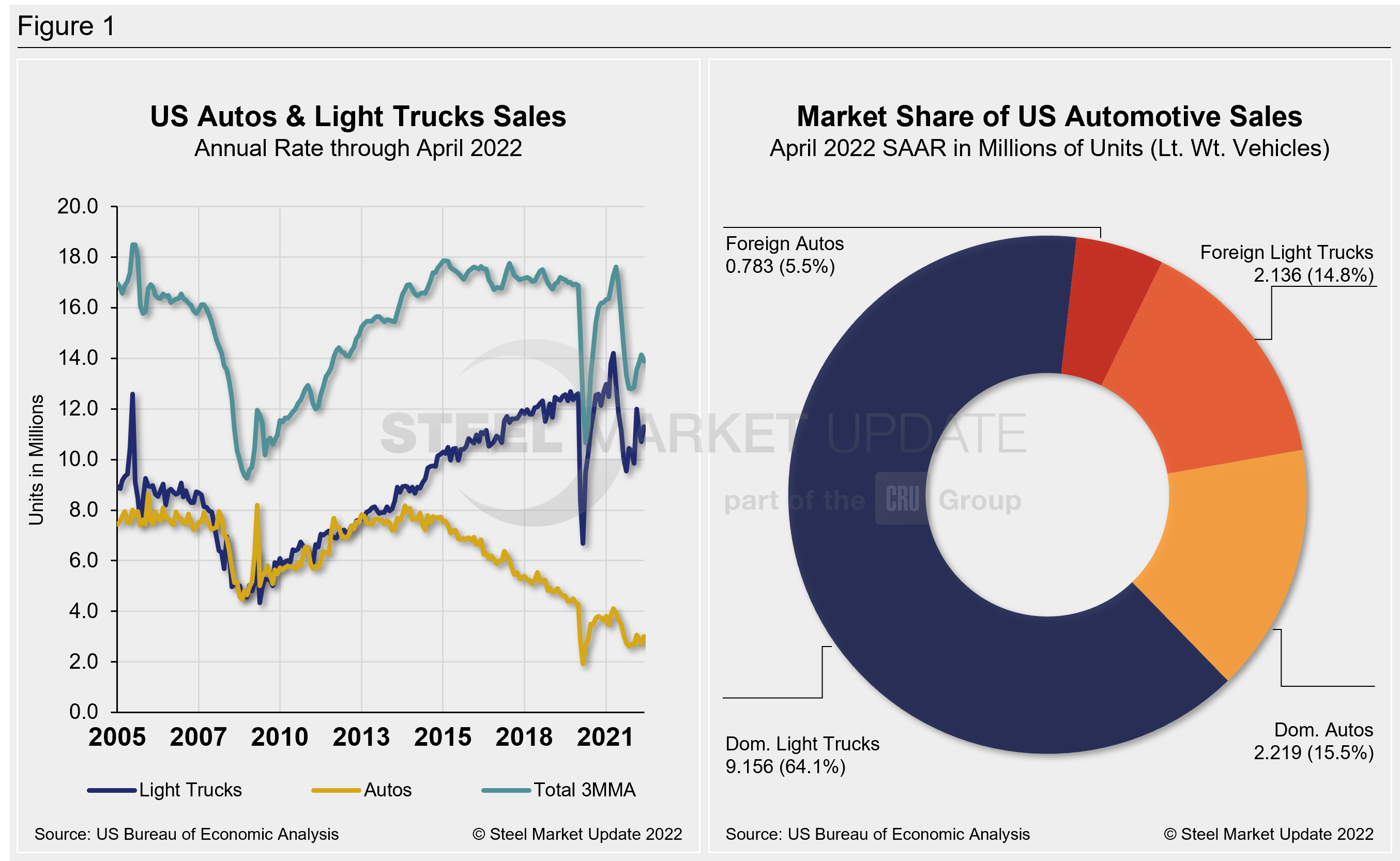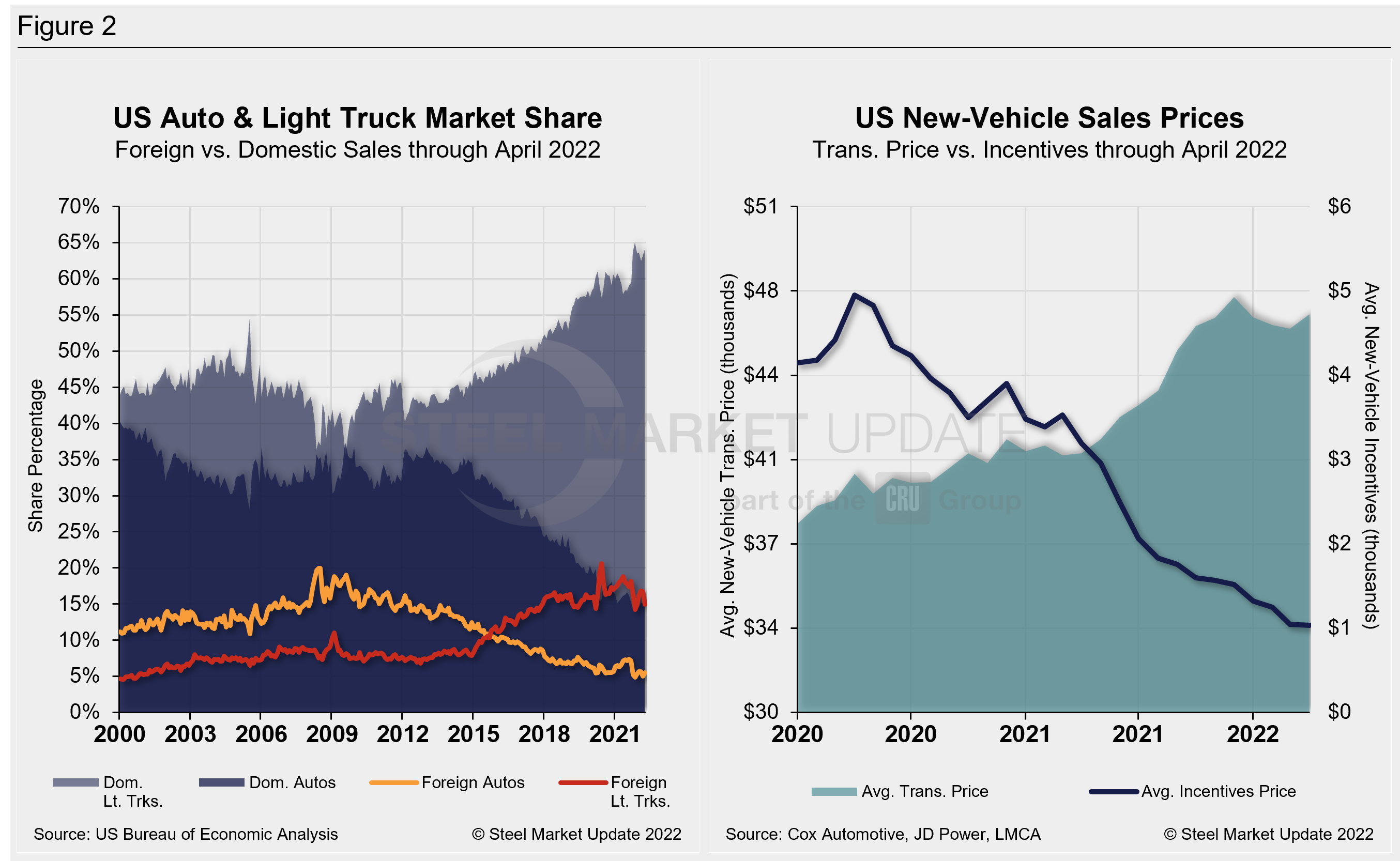Analysis

June 3, 2022
US Light Vehicle Sales Fell in April
Written by David Schollaert
US light vehicle sales fell to 1.25 million units in April, down 18.2% year on year (YoY). The annualized selling rate rose to 14.29 million units from 13.41 million units, the US Bureau of Economic Analysis (BEA) reported.
Interest rates are rising. But what’s holding sales back is supply rather than demand, disrupting normal seasonality. The decline in domestic sales in April was driven by extremely tight inventories.
The global light-vehicle selling rate plunged to 67 million units per year in April. Global supply‐chain issues continued to constrain sales, with lockdowns in China as well as the war in Ukraine only exacerbating these issues. Sales were down 25% YoY, according to LMC Automotive.
Below in Figure 1 is the long-term picture of sales of autos and lightweight trucks in the US from 2005 through April 2022, as well as the market share sales breakdown of April’s 14.29 million vehicles at a seasonally adjusted annual rate.

Microchip and parts shortages continue to disrupt automotive production, resulting in tight inventories and high transaction prices. This dynamic is leading carmakers to focus on high-demand vehicles. Truck/SUVs accounted for 78.4% of new-vehicle retail sales in April. A run-up in the average transaction price (ATP) continues to coincide with historically low incentives.
New-vehicle ATPs rose to $46,526 in April, rising for the first time in four months, and just below the record high of $47,243 set in December 2021. Prices were up 1.3% (+$599) in April versus the prior month and are 16.6% (+$6,622) above the year-ago period, according to Cox Automotive data.
The growth in transaction prices means that, while the sales pace is down 25% YoY, consumers will spend $48.7 billion on new vehicles this month, the second-highest level ever for the month of April and down just 6.1% from April 2021.
Incentives dropped to a record low of $1,034 on average in April, roughly 2.2% of the average transaction price. Incentives are down 79.1%, or $2,157 YoY.
In April, the annualized selling rate of light trucks was 11.29 million units, up 5.5% versus the prior month but down 20.4% YoY. Auto annualized selling rates were similar during the same periods: up 10.9% and down 26.8%, respectively.
Figure 2 details US auto and light-truck market share since 2010 and the divergence between average transaction prices and incentives in the US market since 2020.

Canada and Mexico saw similar dynamics in April. In Canada, light-vehicle sales declined by 5.7% YoY in April to 153,000 units. The selling rate slowed to 1.46 million units annually in April, from 1.52 million units per year in March. The result was disappointing, given that April 2021 was a weak month in Canada amid Covid-related restrictions. Supply chain problems continue to plague the market.
Mexican auto sales were down by 0.2% YoY in April, at 83,000 units, while the selling rate accelerated to 1.14 million units per year, from 1.11 million units per year in March.
Editor’s Note: This report is based on data from the US Bureau of Economic Analysis (BEA), LMC Automotive, JD Power, and Cox Automotive for automotive sales in the US, Canada, and Mexico. In specific, the report describes light vehicle sales in the US.
By David Schollaert, David@SteelMarketUpdate.com







